Define First Booke of Songes or Artes in Foure Partes With Tablature
Main Body
Chapter 2: Music: Fundamentals and Educational Roots in the U.Due south.
Chapter Summary: The commencement half of this chapter attempts to define music as a field of study and offers perspectives on music, including basic vocabulary and what you lot should know about music in order to incorporate it in your work with children. The 2d half gives a brief overview of music education and teaching in the U.South., which provides the foundation of the discipline for the book.
I. Defining Music
"Music" is i of the most difficult terms to define, partially considering beliefs about music have changed dramatically over time simply in Western culture solitary. If nosotros look at music in different parts of the world, we find fifty-fifty more than variations and ideas about what music is. Definitions range from practical and theoretical (the Greeks, for instance, divers music as "tones ordered horizontally as melodies and vertically as harmony") to quite philosophical (co-ordinate to philosopher Jacques Attali, music is a sonoric result between noise and silence, and co-ordinate to Heidegger, music is something in which truth has prepare itself to work). At that place are also the social aspects of music to consider. As musicologist Charles Seeger notes, "Music is a system of communication involving structured sounds produced by members of a community that communicate with other members" (1992, p.89). Ethnomusicologist John Blacking declares that "we can become further to say that music is audio that is humanly patterned or organized" (1973), covering all of the bases with a very broad stroke. Some theorists even believe that there can be no universal definition of music considering information technology is so culturally specific.
Although we may observe information technology hard to imagine, many cultures, such as those found in the countries of Africa or amidst some indigenous groups, don't have a word for music. Instead, the relationship of music and dance to everyday life is so close that the people have no need to conceptually separate the 2. According to the ethnomusicologist Bruno Nettl (2001), some North American Indian languages accept no word for "music" as distinct from the discussion "song." Flute melodies likewise are labeled every bit "songs." The Hausa people of Nigeria have an extraordinarily rich vocabulary for discourse about music, just no single word for music. The Basongye of Zaire accept a broad formulation of what music is, but no corresponding term. To the Basongye, music is a purely and specifically human product. For them, when yous are content, you sing, and when y'all are angry, you make noise (2001). The Kpelle people of Liberia take one word, "sang," to describe a move that is danced well (Stone, 1998, p. seven). Some cultures favor certain aspects of music. Indian classical music, for example, does not contain harmony, but only the three textures of a melody, rhythm, and a drone. However, Indian musicians more than than make upward for a lack of harmony with complex melodies and rhythms non possible in the Westward due to the inclusion of harmony (chord progressions), which require less complex melodies and rhythms.
What we may hear as music in the West may not be music to others. For example, if we hear the Qur'an performed, information technology may sound like singing and music. Nosotros hear all of the "parts" which nosotros remember of as music—rhythm, pitch, melody, form, etc. However, the Muslim agreement of that audio is that it is actually heightened spoken language or recitation rather than music, and belongs in a separate category. The philosophical reasoning behind this is complex: in Muslim tradition, the idea of music every bit entertainment is looked upon as degrading; therefore, the holy Qur'an cannot be labeled as music.
Activity 2A
Mind
Qur'an Recitation, 22nd Surah (Affiliate) of the Qur'an, recited by Mishary Rashid Al-'Efasi of State of kuwait.
Although the verbal definition of music varies widely even in the Due west, music contains melody, harmony, rhythm, timbre, pitch, silence, and form or construction. What we know about music and then far…
- Music is comprised of sound.
- Music is made up of both sounds and silences.
- Music is intentionally made fine art.
- Music is humanly organized audio (Bakan, 2011).
A working definition of music for our purposes might be equally follows: music is an intentionally organized art class whose medium is sound and silence, with core elements of pitch (tune and harmony), rhythm (meter, tempo, and articulation), dynamics, and the qualities of timbre and texture.
Beyond a standard definition of music, there are behavioral and cultural aspects to consider. As Titon notes in his seminal text Worlds of Music (2008), nosotros "make" music in two different ways: we make music physically; i.e., nosotros bow the strings of a violin, we sing, we press down the keys of a piano, we blow air into a flute. We likewise make music with our minds, mentally amalgam the ideas that we have about music and what we believe about music; i.due east., when information technology should be performed or what music is "good" and what music is "bad." For example, the genre of classical music is perceived to have a higher social condition than popular music; a rock ring's lead singer is more valued than the drummer; early blues and rock was considered "evil" and negatively influential; we label some songs as children'due south songs and deem them inappropriate to sing afterwards a certain historic period; etc.
Music, above all, works in sound and time. It is a sonic event—a communication just similar speech, which requires us to heed, procedure, and respond. To that end, it is a part of a continuum of how nosotros hear all sounds including racket, speech, and silence. Where are the boundaries between noise and music? Between racket and speech? How does some music, such every bit rap, claiming our original notions of oral communication and music by integrating speech as part of the music? How exercise some compositions such equally John Cage'southward 4'33'' challenge our ideas of artistic intention, music, and silence?
read more John Cage 4'33''
watch this Annenberg Video: Exploring the globe of music
Activity 2B
Imagine the audience's reaction as they experience Muzzle'south four'33" for the start fourth dimension. How might they react after 15 seconds? 30? Ane minute?
Basic Music Elements
- Sound (overtone, timbre, pitch, amplitude, duration)
- Tune
- Harmony
- Rhythm
- Texture
- Construction/form
- Expression (dynamics, tempo, articulation)
In club to teach something, we demand a consensus on a basic list of elements and definitions. This list comprises the bones elements of music as we understand them in Western culture.
1. Sound
Overtone: A primal pitch with resultant pitches sounding in a higher place information technology co-ordinate to the overtone series. Overtones are what give each note its unique audio.
lookout man this pharynx-singing
Timbre: The tone color of a audio resulting from the overtones. Each voice has a unique tone color that is described using adjectives or metaphors such every bit "nasally," "resonant," "vibrant," "strident," "loftier," "depression," "breathy," "piercing," "ringing," "rounded," "warm," "mellow," "dark," "bright," "heavy," "light," "vibrato."
Pitch: The frequency of the note'southward vibration (note names C, D, E, etc.).
Aamplitude: How loud or soft a sound is.
Duration: How long or short the sound is.
two. Melody
A succession of musical notes; a series of pitches often organized into phrases.
iii. Harmony
The simultaneous, vertical combination of notes, usually forming chords.
4. Rhythm
The organization of music in fourth dimension. Too closely related to meter.
five. Texture
The density (thickness or thinness) of layers of sounds, melodies, and rhythms in a piece: eastward.thou., a circuitous orchestral composition will have more possibilities for dumbo textures than a song accompanied simply by guitar or piano.
Most common types of texture:
- Monophony: A single layer of sound; east.one thousand.. a solo vocalization
- Homophony: A melody with an accessory; due east.g., a pb singer and a band; a singer and a guitar or pianoforte accessory; etc.
- Polyphony: Ii or more contained voices; eastward.g., a round or fugue.
watch this Musical Texture
6. Structure or Class
The sections or movements of a piece; i.e. verse and refrain, sonata form, ABA, Rondo (ABACADA), theme, and variations.
7. Expression
Dynamics: Volume (aamplitude)—how loud, soft, medium, gradually getting louder or softer (crescendo, decrescendo).
Tempo: Beats per minute; how fast, medium, or boring a piece of music is played or sung.
Articulation: The manner in which notes are played or words pronounced: eastward.grand., long or brusk, stressed or unstressed such as brusque (staccato), smooth (legato), stressed (marcato), sudden emphasis (sforzando), slurred, etc.
What Do Children Hear? How Do They Respond to Music?
At present that we have a list of definitions, for our purposes, allow's refine the definition of music, keeping in heed how children perceive music and music'southward constituent elements of sound (timbre), melody, harmony, rhythm, structure or form, expression, and texture. Children's musical encounters can be self- or peer-initiated, or instructor- or staff-initiated in a classroom or daycare setting. Regardless of the type of see, the basic music elements play a significant role in how children respond to music. One of the most important elements for all humans is the timbre of a sound. Recognizing a sound'south timbre is significant to humans in that it helps us to distinguish the source of the sound, i.eastward. who is calling the states—our parents, friends, etc. Information technology besides alerts us to possible danger. Children are able to discern the timbre of a sound from a very immature age, including the vocal timbres of peers, relatives, and teachers, as well as the timbres of different instruments.
Studies show that fifty-fifty very young children are quite sophisticated listeners. Every bit early equally two years of age, children respond to musical mode, tempo, and dynamics, and even show preference for certain musical styles (e.g., pop music over classical) beginning at age five. Metz and his peers affirm that "a common competence establish in young children is the enacting through motility of the music'south most constant and salient features, such every bit dynamics, meter, and tempo" (Metz, 1989; Gorali-Turel, 1997; Chen-Hafteck, 2004). On the amass level, children physically answer to music'southward beat, and are able to motility more accurately when the tempo of the music more clearly corresponds to the natural tempo of the child. As we might expect, children respond to the dynamic levels of loud and soft quite dramatically, irresolute their movements to friction match changing volume levels.
The fact that children seem to answer to the expressive elements of music (dynamics, tempo, etc.) should not come up as a surprise. Near people respond to the aforementioned attributes of music that children do. We hear changes in tempo (fast or slow), changes in dynamics (loud or soft), we physically respond to the rhythm of the bass guitar or drums, and we listen intently to the tune, particularly if there are words. These are among the most ear-communicable elements, along with rhythm and tune.
This is what nosotros would look. However, there are other studies whose conclusions are more vague on this subject field. According to a study past Sims and Cassidy, children's music attitudes and responses do not seem to be based on specific musical characteristics and children may accept very idiosyncratic responses and listening styles (1997). Mainly, children are non-discriminating, reacting positively to almost whatsoever type of music (Kim, 2007, p. 23).
Action 2C
What type of music might children all-time respond to given their musical perceptions and inclinations? Is there a item genre of music, or particular song or set of songs? How might you lot get them to answer actively while engaging a high level of cognitive sophistication?
Music Education Vocabulary
After familiarizing yourself with the bones music vocabulary list above (eastward.g., melody, rhythm), familiarize yourself with a applied educational activity vocabulary: in other words, the music terms that you might apply when working in music with a lesson for children that correspond to their natural perception of music. For most children, the basics are hands conveyed through concept dichotomies, such as:
- Fast or Slow (tempo)
- Loud or Soft (dynamics)
- Short or Long (joint)
- High or Low (pitch)
- Steady or Uneven (vanquish)
- Happy or Sad (emotional response)
Interestingly, three pairs of these dichotomies are found in Lowell Mason'south Transmission for the Boston Academy of Music (1839).
For slightly older children, more than avant-garde concepts can be used, such as:
- Duple (2) or Triple (3) meter
- Melodic Contour (tune going up or down)
- Rough or Smooth (timbre)
- Poetry and Refrain (form)
- Major or Modest (scale)
Music Fundamentals
The emotive aspects of music are what about people respond to beginning. However, while an important part of music listening in our culture, but responding subjectively to "how music makes you experience" is similar to an Olympic judge proverb that she feels happy when watching a gymnast's vault. Information technology may very well exist truthful, but it does not help the judge to empathise and evaluate all of the elements that go into the execution of the gymnast'southward exercise or how to judge it properly. Studies show that teachers who are familiar with music fundamentals, and peculiarly notation reading, are more comfy incorporating music when working with children (Kim, 2007). Fifty-fifty just knowing how to read music changes a instructor's conviction level when information technology comes to singing, and then information technology'south important to have a few of the nuts under your chugalug.
Preparation for Learning to Read Music
Formal note reading is not required in order to sympathise the basics of music. Younger children can learn musical concepts long earlier learning written note. Applying some of the vocabulary and concepts from in a higher place will assistance you begin to discern some of the inner workings of music. The good news is that any type of music can be used for practice.
- Melodic Direction. Just existence able to recognize whether a melody goes up or down is a big step, and an important auditory-cognitive procedure for children to undergo. Imagine the tune of a song such as "Row, Row, Row Your Boat." Sing the vocal dividing it into two phrases (phrase i begins with "row," phrase two begins with "merrily"). What is the direction of phrase 1? Phrase 2? Depict the direction of the phrase in the air with your finger as y'all sing.
- Timbre. Practice describing different timbres of music—play unlike types of music on Pandora, for case, and try to describe the timbres you hear, including the vocal timbre of the singer or instrumental timbres.
- Expression. Now exercise describing the expressive qualities of a song. Are there dynamics? What type of articulation is in that location? Is the tempo fast, slow, medium?
Learning Annotation: Pitch
It sounds unproblematic, but notes or pitches are the building blocks of music. Just existence able to read simple notation will help build your confidence. Learning notes on a staff certainly seems dull, but coming up with mnemonics for the notes on the staff can actually be fun. For case, almost people are familiar with:
- Every Proficient Boy Deserves Fudge to indicate the treble clef line notes
- F A C East to indicate the treble clef infinite notes
- Skilful Boys Deserve Fudge Always for the bass clef line notes
- All Cows Eat Grass for the bass clef space notes
- But assuasive children to develop their own mnemonic device for these notes can a creative manner to have them ain the notes themselves. How virtually Grizzly Bears Don't Fly Airplanes for the lines of the bass clef, or Empty Garbage Before Dad Flips or Elephants Go Big Muddy Feet for the lines of the treble clef?




Notes of the Treble Staff

Notes of the Bass Staff

Note/Pitch Name Practice
Notation Review: Spelling Words with Notation names
Learning Notation: Rhythm
Rhythm concerns the organization of musical elements into sounds and silences. Rhythm occurs in a melody, in the accessory, and uses combinations of short and long durations to create patterns and entire compositions. Rests are equally important to the music as are the sounded rhythms considering, just like linguistic communication, rests use silence to help organize the sounds so we can ameliorate understand them.
Notes and rests
| Whole note | Whole residuum |
| Dotted half notation | Dotted one-half rest |
| Half annotation | Half rest |
| Quarter note | Quarter balance |
| 8th annotation | Eighth residuum |
| Sixteenth note | Sixteenth rest |
Rhythm Practise: Label each rhythm
Learning Notation: Meter
Meter concerns the arrangement of music into potent and weak beats that are separated past measures. Having children feel the potent beats such as the downbeat, the first beat in a measure, is relatively easy. From there, it's a affair of counting, hearing and feeling how the strong vs. weak beats are grouped to create a meter.
Duple Meters
In duple meter, each measure contains groupings of two beats (or multiples of ii). For example, in a 2/4 time signature, there are 2 beats in a measure with the quarter annotation receiving one beat or ane count. In a 4/4 time signature, there are four beats in a measure out, and the quarter annotation also receives one shell or count.
Examples of 2/4 Rhythms
Examples of four/4 Rhythms
Triple Meters
In triple meter, each measure contains three beats (or a multiple of three). For case, in a three/4 fourth dimension signature, there are 3 beats in a measure and the quarter note receives i beat.
Examples of 3/iv Rhythms
Compound Meters
Both duple and triple meter are known every bit elementary meters—that means that each vanquish can be divided into ii 8th notes. The time signature 6/viii is very common for children's rhymes and songs. In 6/8, there are six beats in a measure with each eighth note receiving one beat. half dozen/viii is known every bit a compound meter, meaning that each of the ii chief beats can be divided into three parts.
Examples of 6/8 Rhythms
Learning Note: Dynamics
Learning basic concepts such equally dynamics and tempo will better equip you to involve children in more nuanced music making and listening.
The two basic dynamic indications in music are:
- p, for piano, pregnant "soft"
- f, for forte, significant "loud" or actually, with force, in Italian
More than subtle degrees of loudness or softness are indicated past:
- mp, for mezzo-piano, meaning "moderately soft"
- mf, for mezzo-forte, meaning "moderately loud"
At that place are too more extreme degrees of dynamics represented by:
- pp, for pianissimo and significant "very soft"
- ff, for fortissimo and significant "very loud"
Terms for changing volume are:
- Crescendo (gradually increasing volume)
- Decrescendo (gradually decreasing book)

Crescendo

Decrescendo
Dynamics Practice
Fill up in the blanks below using the post-obit terms: fortissimo, pianissimo, mezzo-forte, mezzo-piano, crescendo, decrescendo, forte, pianoforte
| 1. p | |
| ii. f | |
| 3. ff | |
| 4. mp | |
| 5. | |
| 6. mf | |
| 7. pp | |
| 8. |
Learning Note: Tempo
Tempo is the speed of the music, or the number of beats per minute. Music'south tempo is rather infectious, and children respond physically to both fast and tiresome speeds. The following are some terms and their beats per infinitesimal to help you lot gauge different tempi. The terms are in Italian, and are listed from slowest to fastest.
- Larghissimo: very, very slowly (nineteen beats per minute or less)
- Grave: slowly and solemnly (20–40 bpm)
- Lento: slowly (40–45 bpm)
- Largo: broadly (45–50 bpm)
- Larghetto: rather broadly (l–55 bpm)
- Adagio: irksome and stately (literally, "at ease") (55–65 bpm)
- Andante: at a walking pace (the verb andare in Italian means to walk) (73–77 bpm)
- Andantino: slightly faster than andante (78–83 bpm)
- Marcia moderato: moderately, in the fashion of a march (83–85 bpm)
- Moderato: moderately (86–97 bpm)
- Allegretto: moderately fast (98–109 bpm)
- Allegro: fast, quickly and vivid (109–132 bpm)
- Vivace: lively and fast (132–140 bpm)
- Allegrissimo: very fast (150–167 bpm)
- Presto: extremely fast (168–177 bpm)
- Prestissimo: fifty-fifty faster than presto (178 bpm and to a higher place)
Terms that refer to changing tempo:
- Ritardando: gradually slowing down
- Accelerando: gradually accelerating
Activeness 2nd
Exploring tempo in everyday life: The average person walks at a stride between 76-108 beats per minute. Playlists tin offering unlike tempi for different types of do. Find your tempo! What vocal fits a tedious walking speed, medium, brisk, running? Stores play songs in slower tempi to encourage you to shop. Get to a supermarket or store and notice your walking speed. Is it connected to the trounce of the music?
Read More How Stores apply Music
Scales
Scales are sets of musical notes organized by pitch. In Western culture, nosotros predominantly utilize the major and small-scale scales. Still, many children'southward songs use the pentatonic scales (both major and minor) every bit well.
The major calibration comprises seven different pitches that are organized past using a combination of half steps (i note on the piano to the very adjacent note) and whole steps (two one-half steps together). The major scale looks as follows: Whole Whole Half Whole Whole Whole Half or Due west W H W W W H.
A minor scale uses the post-obit formula: W H Westward W H W W.
Pentatonic scales, found in many early on American and children'south songs, only apply five pitches, hence the moniker "pentatonic." At that place are many types of major pentatonic scales, but 1 of the near popular major pentatonic scale is like to the major calibration, but without the 4th or 7th pitches (Fa or Ti). One of the common pocket-sized pentatonic scales is similar to the minor scale, but also without (Fa or Ti).
Major, minor (natural), and pentatonic scales
Major Scale (C Major)

Minor Scale (A Minor)

Major Pentatonic (C)

Minor Pentatonic (A)

Scale Do
Label the half steps and whole steps for the C major scale.

Practice writing your own C major scale.

Label the half steps and whole steps of the A minor scale.

Do writing your ain A minor scale.

Resources for Farther Learning
In that location are numerous websites that encompass the fundamentals of music, including the staff, notes, clefs, ledger lines, rhythm, meter, scales, chords, and chord progressions.
Music Theory
www.musictheory.cyberspace
musictheory.cyberspace is a music theory resource from basic to complex. Information technology contains agile definitions for musical terms; music lessons regarding the meanings of musical notation; and exercises designed to further understanding of musical notes, chords, and many other musical aspects. This site too includes a popular-up piano and adventitious calculator specifically to aid users learn and practice their developing musical skills. It also features a products page with apps people tin buy to exercise and use music on the become via their smartphones. The site would exist appropriate for people ages 12 and up, and is extremely user friendly.
http://www.musictheoryvideos.com/
Musictheoryvideos.com was designed by Stephen Wiles in the hope to make music theory an agile role of music learning. The site includes music theory lessons for students between grades 1 and v in the form of tables, lists, and videos to help the pupil better sympathise the many parts of music. There are videos nearly the importance and departure of treble and bass clefs; there is a list of music terms and what they hateful, and the site fifty-fifty contains videos entailing the transposition of music. Information technology would be a smashing resources for teachers to offering students, especially those who could benefit from some extra information exterior of class. The site contains information that would take a student step by step through the nuts of music theory through unproblematic brusque videos, complete with British-absolute narrations.
https://www.themightymaestro.
The Mighty Maestro website contains interactive games for children beginning with note values and pitches. Unfortunately, some of the activities require payment, simply the free access games are very basic in terms of musical skill and literacy level, and very accessible.
https://www.classicsforkids.
Classics for Kids is an excellent website with a wealth of music data geared for children. Games, online listening, quizzes, action sheets, information on composers, and lots of music history make this website highly valuable. The website is user friendly, brilliant, and cheerful, and very easy to navigate. Information technology also contains sections for parents and teachers.
world wide web.mymusictheory.com
Mymusictheory.com includes helpful lessons for students grades i through 6, likewise as helpful links for teachers when it comes to pedagogy music theory. For the teachers, they provide music flashcards, lesson plans, music-reinforcing give-and-take searches, and many other helpful resources, all in i location. The site is broken downward by grade level, with each level containing exercises and practice exams for the material learned during each lesson.
www.8notes.com
8notes.com is a large website total of music lessons for several instruments, including just not limited to piano, guitar, vocal, and percussion. Gratis canvass music is bachelor for the different instruments, equally well as music from dissimilar popular movies. An online metronome, guitar tuner, bare sail music, music theory lessons, and music converters are all bachelor at 8notes.com. This site would exist helpful to those learning new instruments, also as experienced musicians who are just looking for some new music to play.
Note Reading
- http://readsheetmusic.info/alphabetize.shtml
- https://www.teoria.com/
- https://world wide web.classicsforkids.com/games/note_names.php
Keyboard Skills
Many classroom teachers have pianos in their rooms and don't know how to use them or underutilize them. Learning to play a basic tune on a piano or keyboard or fifty-fifty put a few chords to them is a peachy confidence builder, and the children dear to sing to a piano accompaniment!
- http://www.howtoplaypiano.ca/
- http://www.pianobychords.com/

Notes on a keyboard
2. Music Education in America
Music education does not exist isolated in the music classroom. Information technology is influenced past trends in general pedagogy, order, culture, and politics.
—Harold Abeles, Critical Issues in Music Education, 2010
How did music education develop into its current class? Did music specialists always teach music? What were classroom teacher's musical responsibilities? Well, to respond these questions, we demand to look to the past for a moment. Initially, music and education worked hand in hand for centuries.
Early Music Education
18th century: Singing schools and their tune books
Before there was formal music education in the United States, in that location was music and education, primarily experienced through religious educational activity. Music education in the U.S. began after the Pilgrims and Puritans arrived, when ministers realized that their congregation needed help singing and reading music. Several ministers developed tune books that used four notes of solfege (Mi, Fa, Sol, La) and shape notes to train people in singing the psalms and hymns required for proper church building singing. By 1830, singing schools based on the techniques found in these books began popping up all over New England, with some people attending singing school classes every solar day (Keene, 1982). They were promised that they would learn to sing in a month or become music teachers themselves in iii months.
Some consider the hymn music of this time to be uniquely American—borrowing styles from Ireland, England, and Europe, just using dance rhythms, loose harmonic rules, and complex vocal parts (counterpoint) where each voice (soprano, alto, tenor and bass) sang its ain unique melody and no one had the main melody. Original American composers such as William Billings wrote hundreds of hymns in this manner.
19th century
Johann H. Pestalozzi (1746–1827)
Pestalozzi was an educational reformer and Swiss philosopher built-in in 1746. He is known as the father of modernistic teaching. Although his philosophies are over 200 years old, yous may recognize his ideas as sounding quite contemporary. He believed in a child-centered instruction that promoted understanding the earth from the child'south level, taking into business relationship private development and physical, tactile experiences such every bit working direct with plants, minerals for scientific discipline, etc. He advocated teaching poor as well as rich children, breaking downwardly a subject field to its elements, and a wide, liberal education forth with teacher training. In the U.Due south., normal schools would take off by the end of the 19th century, and advocates of Pestalozzi'southward educational reform would put into place a system of teacher training that influences u.s. to this 24-hour interval.
Lowell Mason (1792–1872) and the "Amend Music" motility
Lowell Mason, considered the founder of music education in America, was a proponent of Pestalozzi's ideas, particularly the rote method of teaching music, where songs were experienced and repeated start and concepts were taught afterwards. Mason authored the beginning series book based on the rote method in 1864 chosen The Vocal Garden.
Mason was highly critical of both the singing schools of the day and the compositional style. He was horrified at the promises that singing schools made to their students—namely that they could be qualified to teach after only a few months of lessons, and the full general composition techniques used at the time. Mason felt that the music, including the work of composers such every bit Billings, was "rude and crude." To change this, he promoted simplified harmonies that made the tune the most prominent aspect of the music, and downgraded the importance of the other song parts to support the tune. He achieved this through the institution of shape notation singing schools, which carried out his musical vision. The event was that the original hymn style became the purview of the shape note singing schools, more often than not in the Due south, where they flourished for many years. The about famous shape-note book is called Sacred Harp.
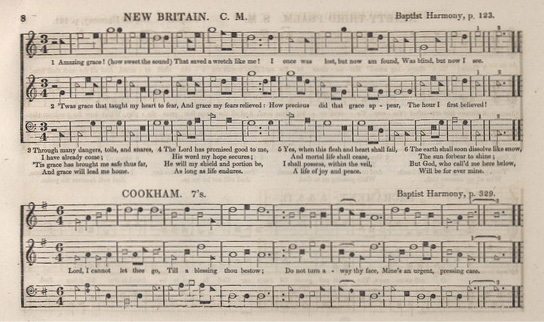
Nether the title "New United kingdom", "Amazing Grace" appears in a 1847 publication of Southern Harmony in shape notes
The songs in Sacred Harp were religious hymns. "Amazing Grace" was ane of the songs published in this volume.
Astonishing Grace
John Newton (1779), Sacred Harp Songbook (1844)

lookout this Shape Note Singing
picket this Sacred Harp Shape Annotation Singing
read more Shape Notes
In 1833, Lowell Bricklayer and others began to introduce the thought of music education in the schools. Bricklayer, along with Thomas Hastings, went on to establish the first public school music programme in Boston, beginning with the Boston Singing School, which taught children singing under his methodology. Eventually, regular classroom teachers were educated in normal schools (subsequently called teachers' colleges), developed in the mid-19th century, where they were taught the general subjects and were expected to teach the arts also (Chocolate-brown, 1919).
The up-to-date chief schoolhouse, realizing the limitations of the 3 R'southward curriculum, has enriched its program past adding such activities as singing, drawing, constructive occupations, story-telling, and games, and has endeavored to organize its work in terms of children rather than the subject matter (Temple, 1920, 499).
Music and the normal school
Normal schools in the 19th century grew out of a demand to educate a burgeoning young American population. These schools were teacher preparation courses, usually with admission to model schools where teachers in training could discover and do teach. Music was a pregnant part of teaching. The Missouri State Normal School at Warrensburg stressed the importance of music in their catalog from 1873–74:
Vocal Music—the importance of music as one of the branches of education is fully recognized. Song music is taught throughout the entire course…and teachers are advised to make it a part of the course of instruction in every schoolhouse with which they may exist connected (Keene, 1982, p. 204).
Music and pedagogy in America: 20th century
Music supervisors, who oversaw the work of classroom teachers, received additional training in music. Music education in the early on 20th century continued under the purview of the music supervisor, while classroom teachers were trained to teach music to their students. Gradually, a specialization process began to occur and music became a regular subject with its ain certification, an educational tradition that continues to this twenty-four hour period. By the 1920s, institutions in the U.S. began granting degrees in music education and, along with groups such as the Music Supervisor's Conference (after the Music Educator's National Conference and currently the National Clan for Music Educators or NAfME), supported the utilize of qualified music teachers in the schools. Eventually, the arts broke into different specialties, and the divide role of music teacher as we know it was created.
Ironically, there was peachy concern at the time regarding these special music teachers. Because music was no longer in the easily of the classroom teachers, great effort was made to "bring music in equally close a relation to the other work equally is possible under the present organisation of a special music instructor" (Goodrich, 1901, p. 133).
Contemporary Music Instruction
Instructional methods
The role of music in the U.S. educational system is perpetually under word. On one hand, many run across structural issues inherent in music's connection to its history and the glaring stardom between the prevalence, importance, and function of music's role in everyday life and its embattled role in the classroom Sloboda (2001). On the other, increased advancement is required in order to justify music'south existence and terms of benefits to the child amidst the threat of constant budget cuts. Given this, it is important to remember music educational activity's history, origin and deep roots in the American didactics experience.
The kickoff of the 20th century was an exciting fourth dimension for music instruction, with several significant instructional methods being developed and taking hold. In the U.s., music education adult around a method of teaching, the Normal Music Course, the remnants of which are adhered to even today in music classrooms. The books used a "graded" curriculum with successively more than circuitous songs and exercises, and combined writer-equanimous songs in these books with folk and classical fabric. An online re-create of the New Normal Music Course (1911) for fourth and 5th graders is accessible via Google Books.
In Europe and Asia, iv outstanding and very different music didactics methods adult: the Kodály Method, Orff Schulwerk, Suzuki, and Dalcroze all played pregnant roles in furthering music education away and in the U.S., and were methods based on folk and classical genres (see Chapter 4 for farther give-and-take about these methods). In contrast to the early music books for the Normal School, for which there was "a paucity of vocal material prompting the authors of the original course to chiefly use their own song material" (Tufts & Holt, 1911, p. iii), Kodály and Orff in item used authentic music in their methods, and accurate music directly related to children's lives (come across Chapter 4 for more on this).
Resource
Gregory, A., Worrall, L., & Sarge, A. (1996). The development of emotional responses to music in immature children. Motivation and Emotion. December twenty (4), 341–348.
Boone, R., & Cunningham, J. (2001). Children's expression of emotional significant in music through expressive body movement Periodical of Non-verbal Beliefs. March, 25 (1), 21–41.
- Children every bit young as four and five years old were able to portray emotional meaning in music through expressive motion.
Metz, E. R. (1989). Move as a musical response among preschool children. Journal of Research in Music Education 37, 48–60.
- The primary result of "Movement every bit a Musical Response Among Preschool Children" was the generation of a substantive theory of children's move responses to music. The author also derived implications of the seven propositions of early children teaching and movement responses to music.
Sims, Due west., & Cassidy, J. (1997). Verbal and operant responses of young children to vocal versus instrumental vocal performances. Journal of Research in Music Pedagogy, 45(two), 234–244.
- Young children'south music attitudes and responses do not seem to be based on specific musical characteristics; children may accept very idiosyncratic responses and listening styles.
References
Abeles, H. (2010). The historical contexts of music education. In H. Abeles & L. Custodero (Eds.), Critical issues in music education: Contemporary theory and practice (1–22). Oxford, Britain: Oxford University Printing.
Abeles, H., and Custodero, Fifty. (2010). Disquisitional issues in music education: Gimmicky theory and practice. Oxford, United kingdom of great britain and northern ireland: Oxford Academy Printing.
Andress, B. (1991). From research to practice: Preschool children and their motility responses to music. Young Children, November, 22–27.
Atkinson, P., & Hammerley, Chiliad. (1994). Ethnography and participant observation. In N. K. Denzin & Y. S. Lincoln (Eds.), Handbook of qualitative enquiry (248–261), Thousand Oaks, CA: Sage Publications.
Attali, J. (1985). Noise: The Political Economic system of Music. Minneapolis: University of Minnesota Press.
Bakan, 1000. (2011). World music: Traditions and transformations. New York: McGraw-Hill.
Blacking, J. (1973). How Musical is Man? Seattle: University of Washington Press.
Boone, R. T., & Cunningham, J. G. (2001). Children's expression of emotional meaning in music through expressive body movement. Journal of Nonverbal Behavior 5(1), 21–41.
Bresler, 50., & Pale, R. Due east. (1992). Qualitative inquiry methodology in music education. In R. Colwell (Ed.), Handbook of enquiry on music education and learning (75–90). New York: Schirmer Books.
Brown, H. A. (1919). The Normal School curriculum. The Unproblematic Schoolhouse Periodical 20(4), 19, 276–284.
Chen-Hafteck, L. (2004). Music and movement from zilch to 3: A window to children'due south musicality. In 50. A. Custodero (Ed.), ISME Early on Childhood Commission Conference—Els Móns Musicals dels Infants (The Musical Worlds of Children), July 5–x. Escola Superior de Musica de Catalunya, Barcelona, Espana. International Society of Music Education.
Cohen, V. (1980). The emergence of musical gestures in kindergarten children (Unpublished doctoral dissertation). University of Illinois, Champaign, IL.
Flohr, J. W. (2005). The musical lives of young children. Upper Saddle River, NJ: Pearson Prentice-Hall Music Instruction Series.
Goodrich, H. (1901). Music. The Elementary School Instructor and Course of Study, 2(two), 132–33.
Graue, Thou. Due east., & Walsh, D. J. (1998). Studying children in context: Theories, methods and ethics. Thousand Oaks, CA: Sage Publications.
Heidegger, Martin. (2008). On the Origin of the Work of Fine art. In D. Farrell Krell (Ed.) Basic Writings (143-212). New York: Harper Collins
Holgersen, S. E., & Fink-Jensen, K. (2002). "The lived body—object and subject in research of music activities with preschool children." Paper presented at the meeting of the10th International Conference of the Early Babyhood Commission of the International Guild for Music Teaching, August 5–9, Copenhagen, Denmark.
Janesick, V. J. (1994). The dance of qualitative inquiry pattern: Metaphor, methodology, and significant. In Northward. K. Denzin & Y. South. Lincoln (Eds.), Handbook of qualitative research (209–219). Thousand Oaks, CA: Sage Publications.
Hashemite kingdom of jordan-DeCarbo, J., & Nelson, J. A. (2002). Music and early on childhood education. In R. Colwell & C. Richardson (Eds.), The new handbook of inquiry on music teaching and learning (210–242). Oxford, U.k.: Oxford University Press.
Keene, J. (1982). History of music educational activity in the United States. Hanover, NH: University Press of New England.
Kim, H. G. (2007). Early childhood preservice teachers' behavior about music, developmentally appropriate practice, and the relationship between music and developmentally appropriate practice (Unpublished doctoral dissertation). Academy of Florida, Gainesville, FL.
Mason, L. (1839). Manuel of the Boston Academy of Music for the instruction of vocal music in the arrangement of Pestalozzi. Boston, MA: Wilkins and Carter.
Mason, 50. (1866). The song garden. Boston, MA: Oliver Ditson and Co.
Metz, Eastward. (1989). Movement as a musical response amongst preschool children. Journal of Enquiry in Music Education 37(1), 48–sixty.
Moog, H. (1976). The musical experience of the pre-schoolchild. (C. Clarke, Trans.). London: Schott Music. (Original work published 1968)
Moorhead, G. Due east., & Pond, D. (1978). Music of young children: General observations. In Music of Young Children (29–64). Santa Barbara, California: Pillsbury Foundation for Advancement of Music Education. (Original piece of work published 1942)
Nettl, B. (2001). Music. In S. Sadie (Ed.), New Grove dictionary of music and musicians (Vol. 17, 425-37) London: Grove's Dictionaries of Music Inc.
Peery, J. C., & Peery, I. W. (1986). Effects of exposure to classical music on the musical preferences of pre-school children. Periodical of Research in Music Education 33(ane), 24–33.
Retra, J. (2005). Musical movement responses in early childhood music education exercise in kingdom of the netherlands. Newspaper presented at the meeting of Music Educators and Researchers of Young Children (MERYC) Briefing, April 4–5, at the University of Exeter.
Sims, W. 50. (1987). The apply of videotape in conjunction with systematic observation of children'due south overt, concrete responses to music: A inquiry model for early on childhood music didactics. ISME Yearbook xiv, 63–67.
Sims, West. 50., & Nolker, D. B. (2002). Private differences in music listening responses of kindergarten children. Periodical of Research in Music Educational activity l(2), 292–300.
Singing Schools. (n.d.). Library of Congress. https://world wide web.loc.gov/collections/music-of-nineteenth-century-ohio/articles-and-essays/singing-schools/ (accessed June 24, 2021).
Sloboda, J. (2001). Emotion, functionality and the everyday feel of music: Where does music education fit? Music Education Research three(2).
Smithrim, K. (1994). Preschool children'due south responses to music on television. Paper presented at the International Social club for Music Teaching Early Childhood Commission Seminar "Vital Connections: Young Children, Adults & Music," July 11–15, University of Missouri-Columbia.
Stone, R. (1998). Africa, the Garland encyclopedia of world music. New York: Garland Publishing, Inc..
Temple, A. (1920). The kindergarten primary unit. The Elementary Schoolhouse Journal, xx/7(20), 498–509.
Titon, J. T. (2008). Worlds of music: An introduction to the music of the world'south people. Boston, MA: Cengage.
Tobin, J. J., Wu, D. Y. H., & Davidson, D. H. (1989). Preschool in 3 cultures—Japan, China, and the United States. New Oasis and London: Yale University Press.
Tufts, J., and Holt, H. (1911). The New Normal music class. Need location of publisher: Silver Burdett and Co.
Vocabulary
articulation: the manner in which notes are played or words pronounced; eastward.thousand., long or curt, stressed or unstressed
counterpoint: the fine art of combining melodies
dynamics: indicates the volume of the sound, and the changes in volume (e.g. loudness, softness, crescendo, decrescendo).
harmony: the simultaneous combination of tones, especially when composite into chords pleasing to the ear; chordal structure, as distinguished from melody and rhythm
homophony: a melody with an accompaniment; e.thousand., a lead singer and a band
ethnic groups: people associated with a certain area who formulate their own culture
melody: musical sounds in agreeable succession or arrangement
meter: the organization of strong and weak beats; unit in terms of number of beats in a measure
monophony: single layer or sound; e.g.; a soloist
notation: how notes are written on the page
pitch: the frequency of a note's vibration
polyphony: 2 or more independent voices; e.g., a round of a fugue
psalms and hymns: examples of church music
recitation: reading a text using heightened voice communication, similar to chanting
rhythm: the pattern of regular or irregular pulses caused in music by the occurrences of strong or weak melodic and harmonic beats
rote method: memorization technique based on repetition, especially when material is to be learned quickly
shape notes: notation style used in early singing schools in the U.S. where each annotation had a unique shape by which it was identified
silence: the absenteeism of sound
solfege: a music teaching method to teach pitch and sight reading, assigning syllables to the notes of a scale; i.due east., Do, Re, Mi, Fa, Sol, La, Ti, Do would be assigned to stand for and aid hear the major scale pitches
audio: vibrations travelling through air, water, gas, or other media that are picked up by the human ear pulsate
tempo: relative rapidity or rate of move, usually indicated by terms such as adagio, allegro, etc., or by reference to the metronome. Likewise, the number of beats per minute
texture: the way in which tune, harmony, and rhythm are combined in a piece; the density, thickness, or thinness or layers of a piece
timbre: the tone color of each sound; each vox has a unique tone color (vibrato, nasal, resonance, vibrant, ringing, strident, high, depression, breathy, piercing, rounded warm, mellow, dark, vivid, heavy, or calorie-free)
Source: https://milnepublishing.geneseo.edu/music-and-the-child/chapter/chapter-2/
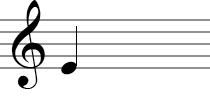
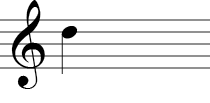
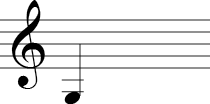
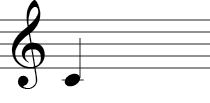
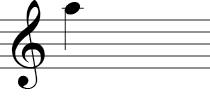

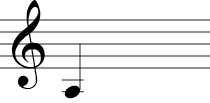
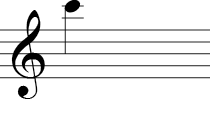



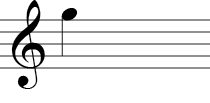


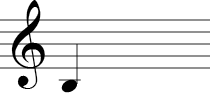

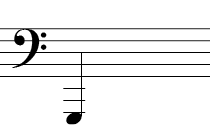
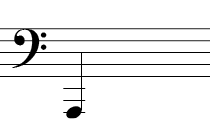



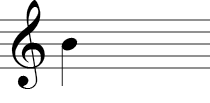
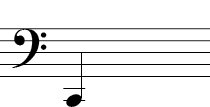
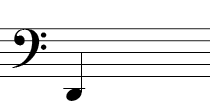
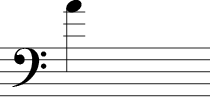




















































0 Response to "Define First Booke of Songes or Artes in Foure Partes With Tablature"
Post a Comment